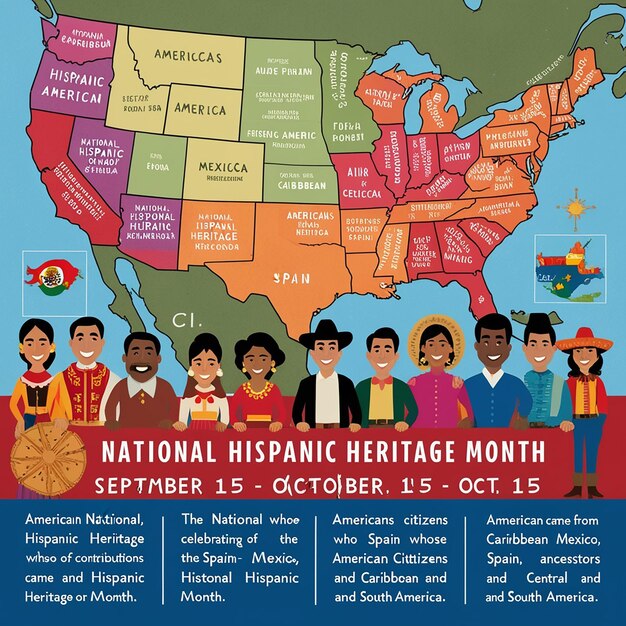The Impact of Immigration on American Culture: Trends and Controversies

The impact of immigration on American culture is a complex issue, debated whether it primarily enriches national identity through diversity or erodes it by diluting traditional values, amidst evolving demographic trends in the US.
America’s cultural landscape is constantly evolving, and the impact of immigration on American culture: Is it Enriching or Eroding National Identity, and What are the Latest Demographic Trends? is at the forefront of this change.
Understanding Immigration’s Role in American Society
Immigration has been a cornerstone of American identity since its inception. The United States has long been considered a melting pot, attracting people from all over the world who seek new opportunities and a better life.
Historical Waves of Immigration
Throughout history, different waves of immigration have shaped the country’s culture, economy, and social fabric. Each wave has brought unique traditions, languages, and values that have been integrated into American society.
Modern Immigration Trends
Today, immigration continues to be a significant factor in the United States, with new demographic trends constantly emerging. Understanding these trends is essential to analyzing the impact of immigration on American culture.
- The rise in immigration from Asia and Latin America has diversified the country’s ethnic makeup.
- Increased urbanization has led to the concentration of immigrant communities in major cities.
- Changes in immigration policies have affected the flow and composition of immigrant groups.
In conclusion, immigration plays a crucial role in American society by constantly reshaping and diversifying its cultural identities.
Cultural Enrichment: How Immigration Fuels Diversity
One of the most significant arguments in favor of immigration is its role in cultural enrichment. Immigrants bring diverse perspectives, traditions, and art forms that can enhance and broaden the cultural horizons of the host country.

Integration of New Traditions
Immigration introduces new traditions that add vibrancy and variety to American culture. These traditions can range from culinary practices and festivals to music, dance, and visual arts.
Promoting Cross-Cultural Understanding
Furthermore, immigration promotes cross-cultural understanding and tolerance. By interacting with people from diverse backgrounds, Americans can gain a greater appreciation for different cultures and perspectives.
- Exposure to diverse cuisine expands palates and exposes people to new flavors.
- Cultural festivals and events offer platforms for immigrants to share their traditions and heritage.
- The arts benefit from the infusion of immigrant artists and their unique creative expressions.
Immigration significantly enriches American culture by integrating new traditions and promoting a greater understanding between diverse communities.
Cultural Erosion: Concerns About National Identity
While immigration undoubtedly brings numerous benefits, some argue that it can also lead to cultural erosion. Concerns often center around the dilution of traditional American values and the potential loss of a cohesive national identity.
Language and Cultural Assimilation
One common concern is the potential for linguistic fragmentation. Some fear that the increasing number of languages spoken in the United States could undermine the dominance of English and impede social cohesion.
Impact on Societal Values
Moreover, some believe that immigration challenges traditional American values and norms. Differences in cultural values can sometimes lead to misunderstandings and social tensions.
- The preservation of a common language is essential for clear communication and social unity.
- Maintaining a core set of values is crucial for preserving a sense of national identity.
- Cultural integration should be encouraged to foster a shared sense of belonging.
In summary, arguments against immigration often cite concerns about cultural erosion and the challenges of maintaining a cohesive national identity.
Demographic Shifts: The Changing Face of America
Demographic shifts in the United States have accelerated due to immigration, reshaping the country’s ethnic and racial composition. The increasing diversity brings both opportunities and challenges.
Growth of Minority Populations
Immigration has led to significant growth in minority populations, particularly among Hispanics and Asians. This demographic shift is transforming the social and political landscape of the country.
Impact on Age Structure
Additionally, immigration influences the age structure of the population. Immigrants tend to be younger, which helps counterbalance the aging of the native-born population.

- The growing Hispanic population is reshaping the cultural and political dynamics in many states.
- An influx of younger immigrants helps sustain the workforce and support social security systems.
- Demographic diversity enhances innovation and economic growth.
In conclusion, demographic shifts spurred by immigration are fundamentally changing the face of America, impacting everything from its economy to its political structures.
Economic Contributions: Immigrants as Drivers of Growth
Immigrants often make significant economic contributions, filling labor shortages, starting businesses, and spurring innovation. Their presence can have a positive impact on the overall economic health of the country.
Filling Labor Gaps
One of the most significant contributions of immigrants is their ability to fill labor gaps in various industries. They take on jobs that native-born workers may be unwilling or unable to do.
Entrepreneurship and Innovation
Immigrants are also known for their entrepreneurial spirit, starting businesses at higher rates than native-born Americans. This entrepreneurial activity creates jobs and generates economic growth.
- Immigrants often work in sectors such as agriculture, construction, and healthcare, where labor shortages exist.
- Immigrant-owned businesses contribute significantly to the GDP and provide employment opportunities.
- Innovations and technological advancements often stem from the diverse perspectives of immigrant entrepreneurs.
In summary, immigrants drive economic growth by filling labor gaps, fostering entrepreneurship, and spurring innovation.
Social Challenges: Addressing Integration and Discrimination
While immigration can bring numerous benefits, it also presents social challenges that need to be addressed. These challenges often revolve around integration, discrimination, and social inequality.
Integration Barriers
One major challenge is the integration of immigrants into American society. Language barriers, cultural differences, and lack of access to resources can hinder this process.
Combating Discrimination
Additionally, immigrants often face discrimination and prejudice, which can limit their opportunities and undermine their well-being. Addressing these issues is crucial for promoting social harmony and equality.
- Providing language classes and job training programs can facilitate integration.
- Implementing anti-discrimination policies and promoting intercultural understanding can combat prejudice.
- Ensuring equal access to education, healthcare, and other essential services is vital for social equity.
In conclusion, addressing integration barriers and combating discrimination are vital for ensuring that all members of society, including immigrants, can thrive and contribute fully.
Policy Debates: Navigating Immigration Reform
Immigration policy is an ongoing topic of debate in the United States, with various perspectives on how to best manage immigration flows and address related challenges. Finding a balanced approach that benefits both immigrants and native-born Americans is essential.
Current Immigration Laws
Current immigration laws are complex and often criticized for being outdated and ineffective. Reforming these laws is seen as necessary to address current demographic realities and economic needs.
Proposed Reforms and Their Impact
Proposed reforms cover a wide range of issues, including border security, pathways to citizenship, and employment-based visas. The impact of these reforms on the economy, society, and culture is closely scrutinized.
- Enhancing border security can help control illegal immigration and ensure national security.
- Creating pathways to citizenship for undocumented immigrants can provide stability and economic benefits.
- Streamlining the visa process for skilled workers can address labor shortages and promote innovation.
In summary, navigating immigration reform requires careful consideration of various factors to ensure that policies are fair, effective, and aligned with the country’s values and goals.
| Key Point | Brief Description |
|---|---|
| 🌍 Cultural Enrichment | Immigrants introduce diverse traditions, enriching American culture. |
| ⚠️ Cultural Erosion Concerns | Some worry about the dilution of traditional American values. |
| 📈 Demographic Shifts | Immigration is reshaping America’s ethnic and racial composition. |
| 💼 Economic Contributions | Immigrants fill labor gaps and drive economic growth. |
Frequently Asked Questions
▼
Immigration enriches cultural diversity by introducing new traditions, languages, and artistic expressions. Immigrants often bring unique perspectives that diversify American culture.
▼
Some concerns include the potential dilution of traditional American values and the fragmentation of a cohesive national identity. There are debates about language and cultural assimilation.
▼
Immigration has led to growth in minority populations, especially among Hispanics and Asians, leading to a more diverse ethnic and racial composition across the United States.
▼
Immigrants contribute to the economy filling labor gaps, starting businesses, and driving innovation. Many are entrepreneurs and help sustain various sectors across diverse fields, too.
▼
Immigrants face challenges such as integration barriers, language difficulties, and instances of social inequality. Addressing these challenges is crucial for social harmony and equity for immigrants.
Conclusion
In conclusion, the impact of immigration on American culture: Is it Enriching or Eroding National Identity, and What are the Latest Demographic Trends? is a multifaceted issue with both enriching and challenging aspects. While immigration undoubtedly fuels diversity and economic growth, concerns about cultural erosion and integration require careful attention. Policy debates continue to shape the narrative, striving to strike a balance that benefits both immigrants and native-born Americans. By addressing social challenges and promoting inclusive policies, the United States can harness the full potential of immigration to build a stronger, more vibrant society.





